Switch to the mobile version of this page.
Vermont's Independent Voice
- News
- Arts+Culture
- Home+Design
- Food
- Cannabis
- Music
- On Screen
- Events
- Jobs
- Obituaries
- Classifieds
- Personals
Browse News
Departments
Browse Arts + Culture
View All
local resources
Browse Food + Drink
View All
Browse Cannabis
View All
-
Business

Cannabis Company Could Lose License for Using…
-
Culture

'Cannasations' Podcaster Kris Brown Aims to 'Humanize'…
-
True 802

A Burlington Cannabis Shop Plans to Host…
-
Business

Judge Tosses Burlington Cannabiz Owner's Lawsuit
-
Health + Fitness

Vermont's Cannabis Nurse Hotline Answers Health Questions…
Browse Music
View All
Browse On Screen
Browse Events
View All
Quick Links
Browse Classifieds
Browse Personals
-

If you're looking for "I Spys," dating or LTRs, this is your scene.
View Profiles
Special Reports
Pubs+More
With a Run of Concerts at Trapp Family Lodge, 'The Sound of Music' Comes Home
Published June 19, 2024 at 10:00 a.m. | Updated June 26, 2024 at 10:04 a.m.
click to enlarge 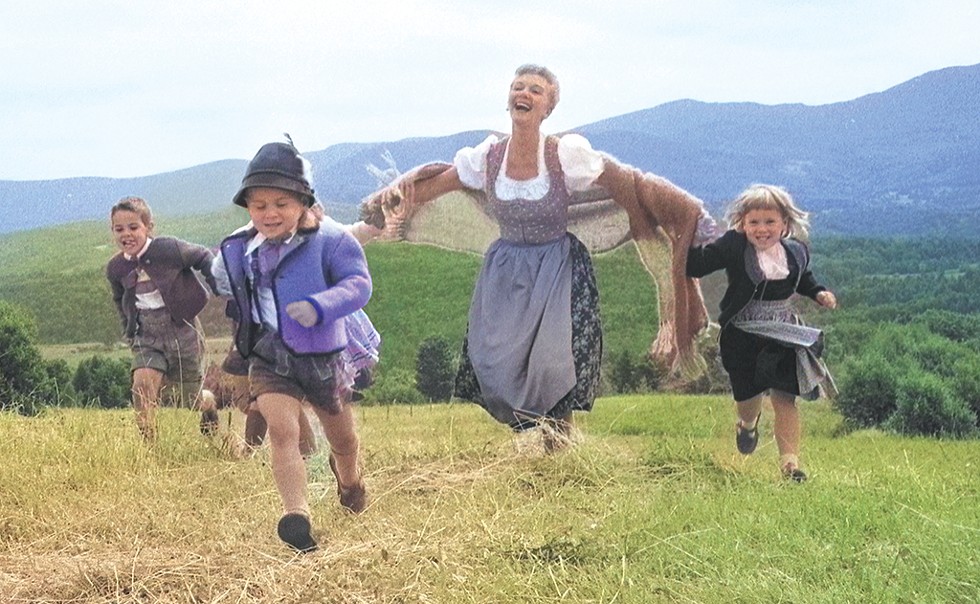

- ©Toni Frissell | Adam Cuerden | (Library of Congress)
- Mary Martin, Broadway's first Maria, running with some of Maria and Georg's grandchildren in Stowe in 1959. From left: Martin, Tobias and Elisabeth von Trapp. Their siblings Bernhard and Barbara are partially hidden.
Help us pay for in-depth stories like this one by becoming a Seven Days Super Reader.
When Julie Andrews flings open her arms, sings and twirls in the opening scene of The Sound of Music, she quickly captures the hearts of moviegoers. As Maria, the spirited novice-turned-governess for the widowed Captain von Trapp's seven children, she sings her way into their hearts as well. She marries the captain, and the family hikes over the Alps to escape Nazi-occupied Austria, backed by the soaring reprise of "Climb Ev'ry Mountain." The 1965 film, inspired by the real von Trapp family, is the most successful movie musical of all time.
This week The Sound of Music comes home when Lyric Theatre and the Vermont Symphony Orchestra bring the Broadway musical score to the Stowe hillside on which the von Trapp family settled in 1942 and where descendants still operate a sprawling hospitality business. Four sold-out performances from Thursday, June 20, through Saturday, June 22, mark the first-ever concert version of the musical and the first time the Rodgers and Hammerstein work has been performed live at Trapp Family Lodge.
The event is a testament to both the world's love affair with the musical and the affection Vermonters hold for the von Trapps. Swift tickets sales surprised no one — the fourth performance was added to meet demand. "There's a mythology around this show," Lyric Theatre executive director Erin Evarts said. "And there's mythology around the show specifically for those of us who grew up in Vermont." Here, the von Trapps are neighbors. And locals grow up learning, Evarts said only a little facetiously, that "they walked up and over the Alps and down into Stowe."
Their legacy lives on here, tended by the third generation of the family that has both wrestled with and embraced the enduring popularity of the fictionalized story they inspired.
Daily, visitors to the lodge seek the autographs of Maria's grandchildren Kristina von Trapp Frame, 54, and Sam von Trapp, 51, siblings who operate the lodge along with Kristina's husband. "To me, the best thing about being a von Trapp is that opportunity to make someone happy," Sam said.
His father, Johannes, 85, is the youngest of the 10 famous von Trapp children and the only one still living. He chose not to be interviewed for this story. He's "a little bit tired of talking about The Sound of Music," Sam said.
Johannes retired from the lodge last year and spends time on his cattle ranch in New Mexico, where he introduces himself as "Von" and no one expects him to sing "Edelweiss." He and his siblings had conflicting opinions about the movie, which, like the Broadway show that preceded it, changed their names and took a number of other artistic liberties.
The movie, Sam has heard his father say, is a beautiful work of art, but it's not a documentary. "And it doesn't claim to be," Sam said. Still, he added, "we just kind of kept it at arm's length."
"I call the movie my sci-fi parallel-universe family," Kristina added.
"Edelweiss" and the other show tunes in the film are nothing like the baroque, classical, liturgical and folk music her real relatives sang — by memory, a cappella, and in four- and five-part harmony. "But to everybody else in the world, we're all under the von Trapp umbrella," Kristina said. "People come here expecting our staff and us to be singing and twirling."
While there will be plenty of singing — and maybe some twirling — this week, those who want to know more about the von Trapps would do well to take the lodge's history tour to learn their true story. Said Angie Shorey, a Jeffersonville resident who works in the von Trapp Brewing Bierhall: "It's better than the movie."
A Long, Long Way to Run
Even Vermonters are likely to be more familiar with the treacly tale of the fictional von Trapps than they are with the family's actual history.
The von Trapp children did not need to learn "Do-Re-Mi" from Maria, as their fictional counterparts did. Music filled the family home in Austria long before Maria Augusta Kutschera moved in. Georg Johannes von Trapp and his first wife, Agathe, played violin. Agathe also played piano. The children started lessons as early as age 5 and played sonatas and chamber music together.
Agathe died of scarlet fever in 1922, when the couple's oldest child, Rupert, was 11 and the youngest, Martina, just 18 months.
Four years later, Georg visited Salzburg's Nonnberg Abbey — not in search of a governess but to find a live-in tutor for his daughter Maria. The 11-year-old was still recovering from the illness that killed her mother and was too weak to walk to school. (She lived to be 99.)
The abbey sent 21-year-old Maria, a graduate of Vienna's State Teacher College for Progressive Education and a would-be nun who slid down banisters, took stairs two at a time and whistled in the abbey, behaving much like her "flibbertigibbet" counterpart in the film. She went reluctantly — and did, in fact, arrive with a guitar — then fell in love with the children. She introduced them to madrigals and taught them to sing in parts. It was their idea that Georg, who was engaged to marry someone else, should marry Maria instead, Maria recounted in the 1983 documentary The Real Maria.
Georg was sitting at his desk when his children proposed the plan. "And he just lightly said, 'Oh, I don't even know whether she likes me,'" Maria recalled.
So the children ran to the next room, where Maria was cleaning a chandelier. "And they said, 'Maria, do you like our father?'
"Now what do you answer children asking that question?" Maria says in the film. "'Of course I do,' I said ... They ran back and said to their father, 'Of course she does,' she said."
That evening, Maria was cleaning in the living room when Georg walked in and said, "That was awfully nice of you."
"What?" she asked.
"Oh," he said, "aren't we engaged?"
"I held a very precious vase in my hands," Maria recounted. "And bang went that vase. It broke into a hundred pieces." As in the movie, Maria sought solace in the abbey. She ran into Salzburg, up the 144 steps to the abbey, and explained her dilemma to the Reverend Mother, who prayed with the rest of the sisters before telling Maria that it was the will of God that she marry the captain.
Maria walked back to the von Trapp home, where Georg waited. "And as I came in, all he said was, 'And?'
"And I started sobbing," Maria recalled, "and said, 'They told me I have to marry you.' And that was our engagement."
The love story may pale compared to the one in the movie, but the family's escape from Austria and the obstacles life continued to present, even years later in Vermont, were nearly as dramatic.
As on the big screen, the von Trapp family lived in increasing danger as they repeatedly refused to show support for the Nazi regime that had ruled Austria since German troops arrived in March 1938. They were a famous singing family by then. Refusing Adolf Hitler's request to sing for his birthday, they expected, would be the final act of defiance that would send them to a concentration camp.
In the film, Andrews and Christopher Plummer, playing Georg, have seven children in tow when they escape by climbing over the Alps to Switzerland. That route would have landed them in Germany. In reality, the von Trapps — Maria pregnant with the family's 10th child — donned rucksacks and boarded a train for Italy, ostensibly headed for mountain climbing.
The next day, the border was closed.
Climb Ev'ry Mountain
Music was literally the family's ticket to the United States. A New York concert promoter sent them tickets for the SS American Farmer, which set sail from London bound for New York City on October 7, 1938.
Virtually penniless upon arrival, they set out on tour a week later. The Trapp Family Singers, as they eventually became known, performed music by Bach, Brahms, Mozart and 16th-century composer Orlando di Lasso, as well as folk songs from several countries. They played recorders, viola da gamba and spinet, and they yodeled.
In their first concert after arrival, they didn't speak a word onstage, but they sang "My Old Kentucky Home" in perfect English.
Four years later, happy to escape the heat and asphalt where they were living in suburban Philadelphia, they accepted an invitation to spend the summer in Stowe. The Green Mountains reminded them of Austria. They found themselves wanting to stay and began looking for a farm to buy.
As summer neared its end, no realistic options had emerged. They were about to abandon their search when a farmer led them to his hilltop farm, a rolling 600 acres on Luce Hill. "And the farther up we went, the more beautiful became the view," Maria wrote in her 1949 book, The Story of the Trapp Family Singers.
The farmhouse, Georg observed, was "so crooked it doesn't know which side to fall on." But, Maria wrote, "Three valleys lay open before us, and as many as nine mountain ranges we could count stretching in the blue distance."
We can build a house, Maria told him, but we can't build a view. They bought the view — and the house partially collapsed during a blizzard the following spring.
The von Trapps were accustomed to challenge. In Austria, they let most of their household staff go and took in boarders after losing their wealth when their local bank collapsed. Since arriving in the U.S., they had eked out a living by touring. So when the house in Stowe fell down, they picked up crowbars, tore down the old walls and began to rebuild.
Without sons Rupert and Werner, who were serving in the U.S. Army's 10th Mountain Division, Georg, Maria and their daughters dug ditches, mixed cement, planted trees, cut hay, produced maple syrup, and tended cows and pigs.
Neighbors, wary of the German-speaking family, warmed to them when the von Trapps gave a benefit concert to raise money to replace the leaky roof on Stowe High School. After the concert, hundreds of people shook their hands, and the shop teacher organized a work bee to help finish the von Trapp home, which they named Cor Unum, Latin for "one heart."
The family began hosting guests in 1945 at the Trapp Family Music Camp, which they operated for about 11 summers in old Civilian Conservation Corps barracks nearby. They opened their 27-room home to guests in 1950.
All the while, they toured. In the late 1940s and early '50s, the Trapp Family Singers were Columbia Artists Management's most successful choral group, averaging more than 100 concerts a year, according to Laurence Maslon, author of The Sound of Music Companion.
The group disbanded in 1956. The children, grown by then, were pursuing their own careers, and several had married. Georg had died of lung cancer in 1947.
Ending their singing career, of course, did not extinguish the von Trapps' fame. World War II had upended their lives in one way. Broadway was about to do it again.
Help us pay for in-depth stories like this one by becoming a Seven Days Super Reader.
Our Favorite Things
Lydia Herbolsheimer and six of her colleagues from a Pembroke, Mass., Catholic retreat center sang in their van all the way to Stowe and arrived at the lodge this month wearing the Maria-style kerchiefs Herbolsheimer had made each of them for the trip.
The nucleus of the family's life in the United States, Trapp Family Lodge is a tourist magnet. Although its website home page doesn't mention its connection to The Sound of Music, devotees know. In vans, cars and tour buses, they arrive like pilgrims in wondrous disbelief that flesh-and-blood von Trapps live and breathe here.
"I just got chills," a New York visitor said when she overheard Elisabeth von Trapp refer to Maria as her grandmother.
"It looks like the movie," said Paula Buchanan, one of the kerchief-wearing tourists. She and her companions admired the mountains while eating the picnic lunch they packed — not schnitzel with noodles, but chicken salad with Oreos. "Our favorite things," Buchanan said.
The original lodge was destroyed by fire on a frigid December night in 1980. Maria was rescued from her second-floor apartment and, with Johannes, watched the family home burn.
Once again, the von Trapps rebuilt. When their new 96-room Alpine lodge opened three years later on the same site, it was almost quadruple the size of the original home. The current lodge anchors a 2,600-acre property that includes 100 time-share condos, 40 villas, the nation's first cross-country ski center and the von Trapp Brewing Bierhall.
Maria died in 1987 at age 82. Georg and Maria's descendants are now scattered across the U.S. and Europe. Among the Vermonters are Werner's daughter Elisabeth, a professional singer who splits her time between Waitsfield and Salzburg; his son Tobias, who ran Von Trapp Greenhouse in Waitsfield with his wife, Sally, for 41 years; and Tobias' daughter Emily, who operates von Trapp Flowers there now. Werner's grandson Sebastian von Trapp and his wife, Molly, are Waitsfield cheesemakers.
But as family businesses go, the lodge benefits most from The Sound of Music. It welcomes 500,000 visitors a year. Many, like the awe-inspired New Yorker, are just passing through. They take meet-the-sheep and meet-the-cows tours. They eat Sacher torte, linzer torte and apfelstrudel in the Kaffeehaus and visit the gift shop to buy edelweiss seeds and — much to Johannes' chagrin — a stuffed toy goat that plays "The Lonely Goatherd."
"Isn't that awful?" he lamented to the Seattle Times in 2008. "My staff hid it from me for months. But it does sell."
When she ran the now-defunct Moscow General Store, two miles away, Peigi Guerra, now a lodge docent, handed out directions to the property printed in seven languages.
Aside from collateral benefits, The Sound of Music did not make the von Trapp family rich. Maria von Trapp sold the rights to her 1949 book for $9,000 to a German film company, which made the 1956 Die Trapp-Familie, followed by a sequel. Millions of dollars have been paid for production rights since then, but the family has received just a small percentage of royalties. The Tony Award-winning musical starring Mary Martin opened on Broadway in 1959 and has been licensed for performance around the world thousands of times since. The 1965 movie starring Julie Andrews has been translated into more than three dozen languages.
Reviews of the movie from the von Trapps were decidedly mixed. On stage and screen, The Sound of Music used their family name, changed the children's first names, morphed their story and told it in show tunes.
Werner's daughter Elisabeth remembers getting dressed up and driving from the family's Waitsfield dairy farm to Burlington to see the movie. "My father kept saying, 'What is my name?'" Her father was portrayed as Kurt.
Elisabeth sensed disappointment in her dad and his siblings, who didn't recognize the story as their own. The most disturbing aspect was the way the productions portrayed Georg as a severe naval captain removed from his children's lives. He was "so completely different," his daughter Maria told Reuters in 2008. He "always looked after us a lot, especially after our mother died."
Maria was the stricter parent, their children said.
Johannes' children rarely watched the film. "It wasn't relevant to us," Kristina recalled. She and Sam first saw the movie when she was about 10 years old and he was about 8, she said. "And we're thinking, OK, so the kids in the movie that have different names are supposed to be our aunts and uncles that are old with white hair — and different names, right?"
In time, Elisabeth von Trapp said, her father understood the movie's appeal. "It's a very beautiful story," Werner told Elisabeth, "and it should continue to be told."
While Johannes enjoys relative anonymity out of the limelight, his son, Sam, helps his own sons, ages 6 and 8, navigate the legacy they've inherited. "It's a data point," Sam said. His sons know there's a show about the family's history. "They're also aware that we take out the compost and we feed the animals and Daddy does the dishes."
Before taking the boys to a live production of The Sound of Music last year, Sam showed them the movie to answer any questions it might spark without disturbing a live performance. Still, Sam said, one burning issue compelled his sons to talk during the musical: "And that was that Rolf's bike only had one speed."
Raindrops on Roses
While a few of Maria and Georg von Trapp's 164 living descendants are musicians, none will perform this week. Kristina von Trapp Frame and Sam von Trapp will welcome each audience, then pass the microphone to Kerstin Anderson. The South Burlington native, who portrayed Maria in a 2015 national tour of The Sound of Music, will host and sing.
Oscar Hammerstein's descendants and Austria's ambassador to the United States, Petra Schneebauer, are expected to attend, along with 8,000 others who scooped up tickets for admission to the concert meadow, a natural amphitheater ringed by the Green Mountains.
It's the music, Sam believes, that accounts for the movie's staying power. "It's a great story, and it was well acted," he said. "But if it didn't have that catchy soundtrack, I don't know that people would still be watching The Sound of Music 60 years later."
And it's the music, with just snippets of dialogue to stitch the story together, that ticket holders will hear.
The Sound of Music is among the least sophisticated of Rodgers and Hammerstein's scores, The Sound of Music Companion author Maslon said. But it's accessible to a wide audience — young people can relate — and its story taps a "Main Street chord," he said, as comforting in the fractured 2020s as it was during the turbulent '60s: An unlikely family is born and stays together amid tremendous adversity.
The Broadway cast album, released in December 1959, spent 16 weeks at No. 1 and remained on the Billboard charts — which track all musical genres — for 276 weeks. The movie soundtrack came out in 1965 during the height of Beatlemania and stayed on the charts until March 1969, Maslon has written.
"That means," he wrote, "throughout the entire decade of the 1960s ... the most popular and enduring music in America was the score to Rodgers & Hammerstein's The Sound of Music."
Lyric Theatre director Evarts has dreamed for six years of teaming up with the VSO to stage an outdoor concert version of a musical. Upon realizing that 2024 marks several significant anniversaries — the VSO's 90th, Lyric's 50th, the 65th of The Sound of Music's Broadway debut and the 75th of Maria von Trapp's first book — Evarts and VSO organizers decided this was the year, The Sound of Music was the show and Trapp Family Lodge should be the venue.
Sam and Kristina agreed. It's easier for the third generation to embrace The Sound of Music, Sam said: "We really felt that this was a very tasteful way to celebrate it."
Vermont actors offered to sing any role, as long as they could participate, Evarts said. Forty-one will take the stage. Singing in the concert meadow backed by a 50-piece orchestra will be a highlight of her career, soprano Allison Steinmetz predicted. "It is a gift and a joy to sing this music," she said. "It flows in a way that makes perfect lyrical sense."
As the Mother Abbess, she will sing "Climb Ev'ry Mountain," the song her grandparents referenced to encourage a young Steinmetz and her two siblings to persevere.
Waterbury soprano Bailey Hoar Jensen, who will share the role of Maria, said she is overwhelmed — "in the best of ways" — thinking about the upcoming performance. A native Vermonter, she's visited Trapp Family Lodge countless times and "done the twirl" in the hills there, she said. She's visited the Austrian Alps, "And I've done the twirl there, too."
A self-described "Sound of Music acolyte," she has played Gretl and Liesl in two different productions at Stowe Theatre Guild. The opportunity to sing Oscar Hammerstein's poetic lyrics backed by Richard Rodgers' lush score "in a place where this music feels like it belongs" is unparalleled, she said. "My mind is blown, honestly."
Because a concert format is new for The Sound of Music, Evarts worked closely with the show's licensing company to hammer out specifics: no costumes; no dancing, except for the traditional Austrian Ländler; no props — save for a guitar and boatswain whistle — and minimal dialogue.
Will Maria be allowed to twirl?
Careful not to give away too much, Evarts hedged: "The audience might see that."
Or they might just twirl themselves, singing along with every word.
With Confidence: Maria von Trapp on The Sound of Music
Maria, like her children, disliked the way Broadway presented her husband as "almost a Prussian general." Her written reflections on the topic appear in William Anderson's book The World of the Von Trapp Family: From Austria to Vermont With the Legendary Family Who Inspired The Sound of Music. Having sold her artistic rights, she had no say in how her family was depicted. Despite the harsh portrayal of Georg and other changes to the family's story, Maria concluded, "All of the important things were true."
But when she learned of plans to adapt the musical as a movie, she got worried: "For heaven's sake, what am I going to do if they have me twice divorced in this film?"
She happened to visit Salzburg during filming in 1964 and landed a role as an extra. For mere seconds, Maria, her daughter Rosmarie and granddaughter Barbara can be spotted walking behind an arch as Julie Andrews sings "I Have Confidence."
When the movie was released, a nervous Maria asked for a private showing. The opening scene transported her back to Salzburg, and she relived her life at the abbey. The escape scene, however, with the movie family trekking over the mountains accompanied by an orchestra and choir raised an eyebrow. "When you flee, you must do it quietly, I thought," she wrote. "But we must allow Hollywood to do a little Hollywooding."
Maria was in tears by then. "My anxieties were over. Did I like the film, I was asked. I answered: 'Yes, very much indeed.'"
Fact vs. Fiction
The Sound of Music changed several aspects of the von Trapp family's story, including these:
Captain Georg von Trapp was not militant with his children. "He was disciplined, but he loved his children," grandson Sam von Trapp said.
Music filled the household even before Maria arrived.
Maria did not make play clothes from curtains for the children. She ordered them.
There was no Rolf. Agathe, portrayed as Liesl, did not have a boyfriend who betrayed the family to the Nazis. But the real von Trapps' butler, Hans, belonged to the Nazi Party. He remained loyal to the family and urged them to leave Austria.
Maria and the captain married in 1927, 11 years before the family left Austria. They had nine children, not seven, when they fled.
The family left on a train to Italy. Hiking over the Alps, as their fictional counterparts do, would have taken them to Germany, dangerously close to Adolf Hitler's mountain retreat, the Eagle's Nest.
Rather than pushy promoter Max Detweiler, renowned opera star Lotte Lehmann said the von Trapps "had gold in their throats" and persuaded Captain von Trapp to let his family sing in the Salzburg music festival. A priest, the Rev. Franz Wasner, was the von Trapps' longtime musical arranger and conductor.
These are the eldest von Trapp children, in birth order followed by their character names:
Rupert — Friedrich
Agathe — Liesl
Maria — Louisa
Werner — Kurt
Hedwig — Brigitta
Johanna — Marta
Martina — Gretl
Three children, born to Georg and Maria, are not depicted in the film: Rosmarie, Eleonore and Johannes.
Help us pay for in-depth stories like this one by becoming a Seven Days Super Reader.
The Sound of Music: In Concert, Thursday, June 20, through Saturday, June 22, 7:30 p.m.; and Saturday, June 22, 2 p.m., at Trapp Family Lodge in Stowe (rain location: the Flynn in Burlington). All shows are sold out. flynnvt.org
The original print version of this article was headlined "The Hills Are Alive | With a run of concerts at Trapp Family Lodge, The Sound of Music comes home"
Got something to say?
Send a letter to the editor
and we'll publish your feedback in print!
About The Author

Mary Ann Lickteig
Bio:
Mary Ann Lickteig is a Seven Days culture staff writer based in Burlington. Prior to joining the writing staff, she was a contributing editor to both Seven Days and Kids VT. She previously worked as a reporter for the Burlington Free Press.
Mary Ann Lickteig is a Seven Days culture staff writer based in Burlington. Prior to joining the writing staff, she was a contributing editor to both Seven Days and Kids VT. She previously worked as a reporter for the Burlington Free Press.
More By This Author
Latest in Category
Related Locations
-
Trapp Family Lodge
- 700 Trapp Hill Rd., Stowe Stowe/Smuggs VT 05672
- 44.46557;-72.74462
-
 802-253-8511
802-253-8511
- www.trappfamily.com
Related Stories
Speaking of...
-

Rain Curtails Historic 'Sound of Music' Concerts
Jun 22, 2024 -

Adam Tendler and the VSO to Premiere Vermont Composer Nico Muhly’s First Piano Concerto
May 1, 2024 -

The VSO's Jukebox Quartet Explores the 'Sound of Science'
Apr 10, 2024 -

Competition for Young Composers
Mar 12, 2024 -

Waterbury: What to See, Do and Eat During the Eclipse
Mar 6, 2024 - More »




























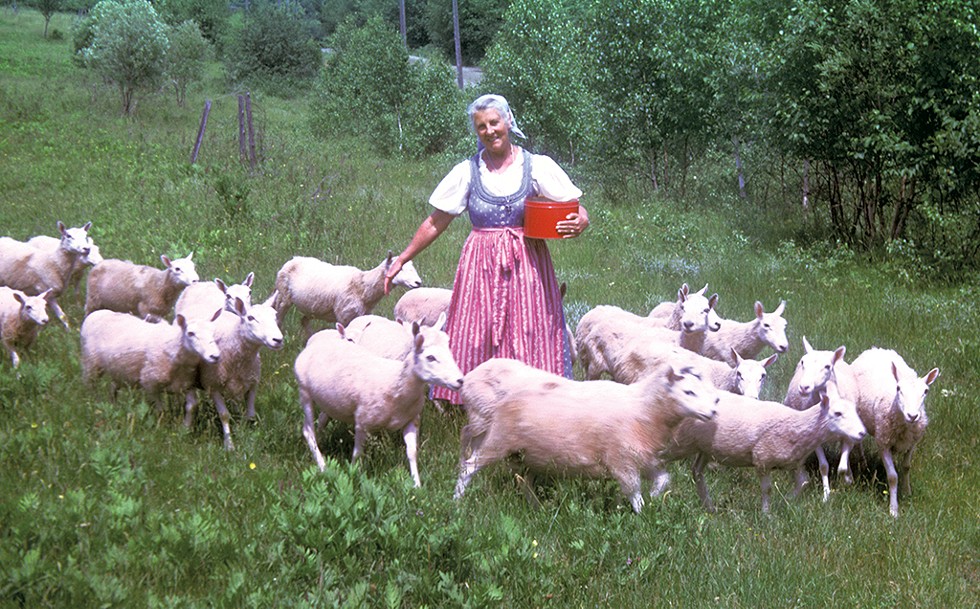
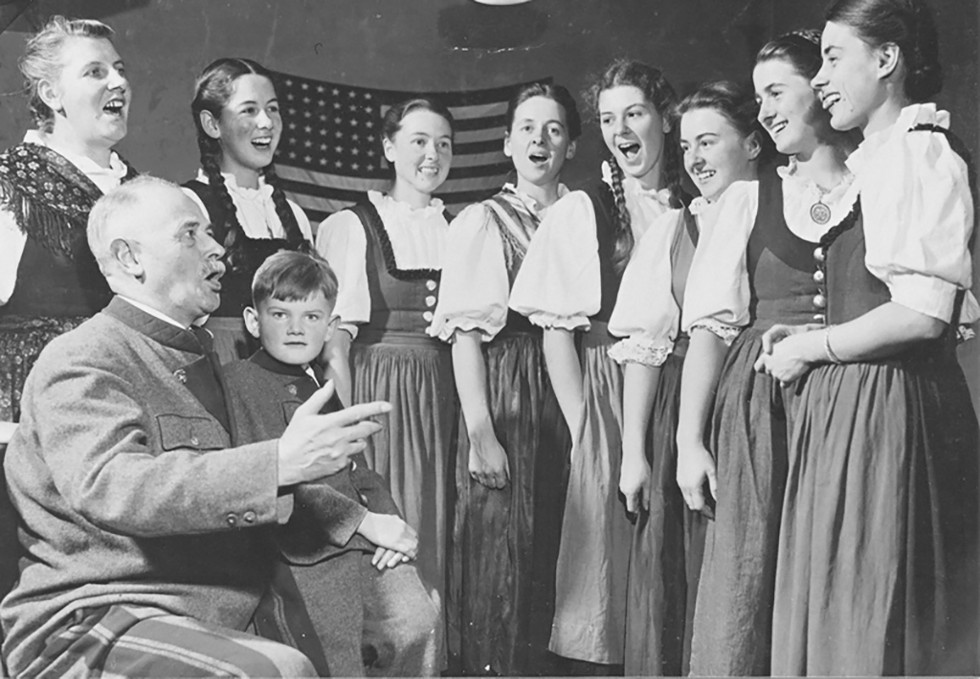

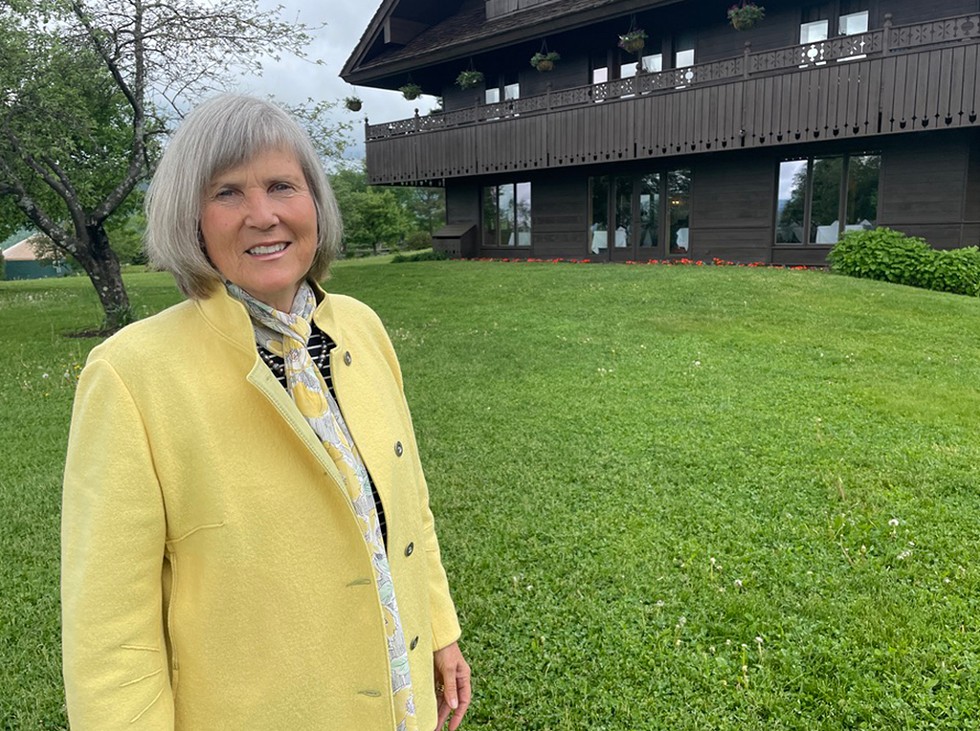
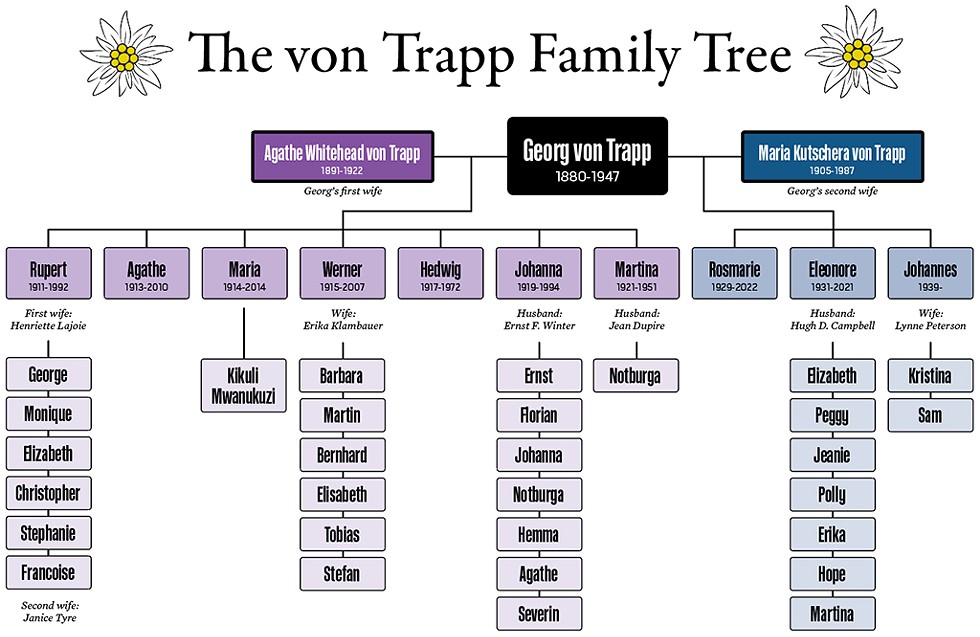
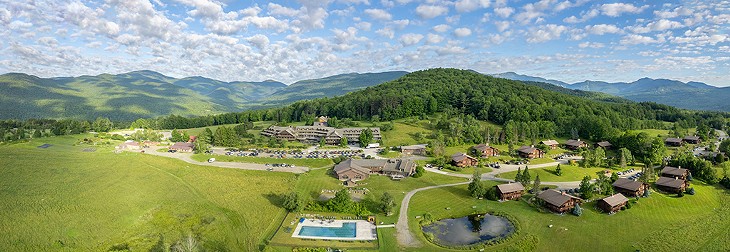
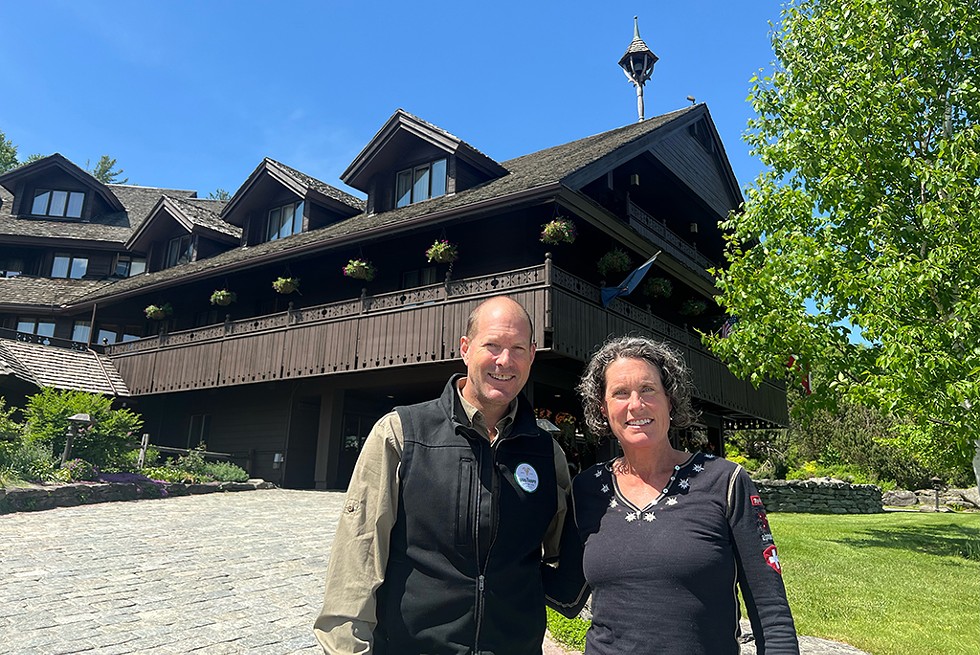
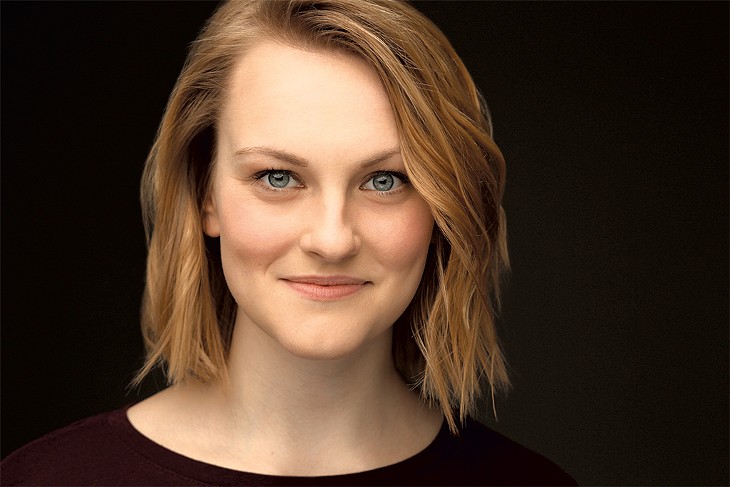
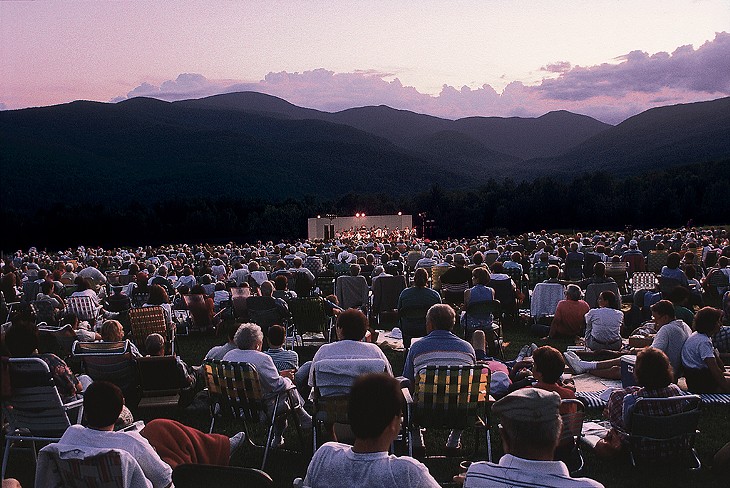
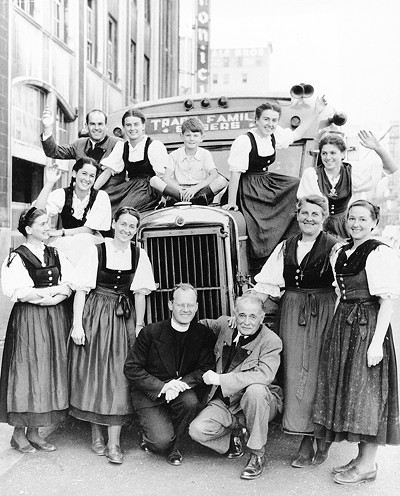
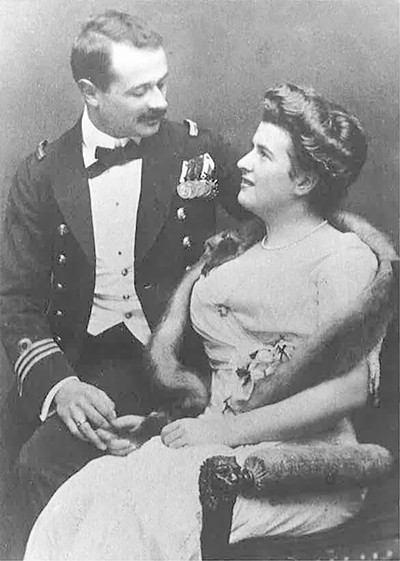
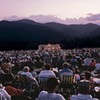
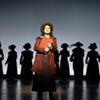

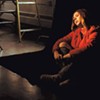


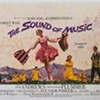
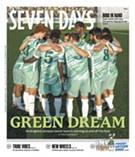
find, follow, fan us: